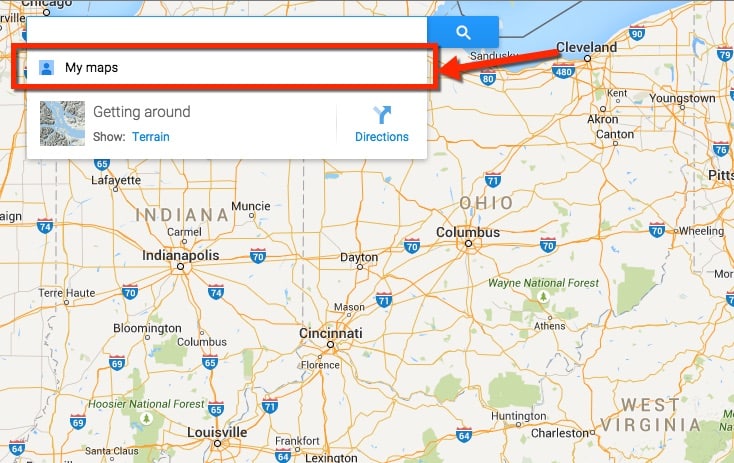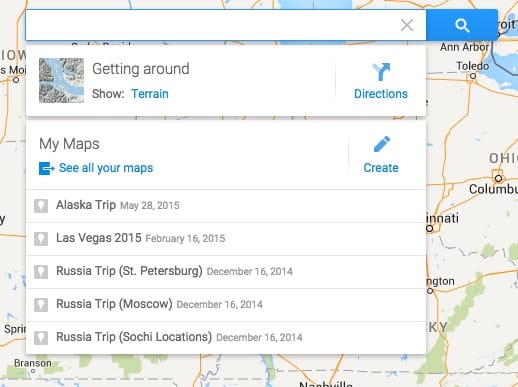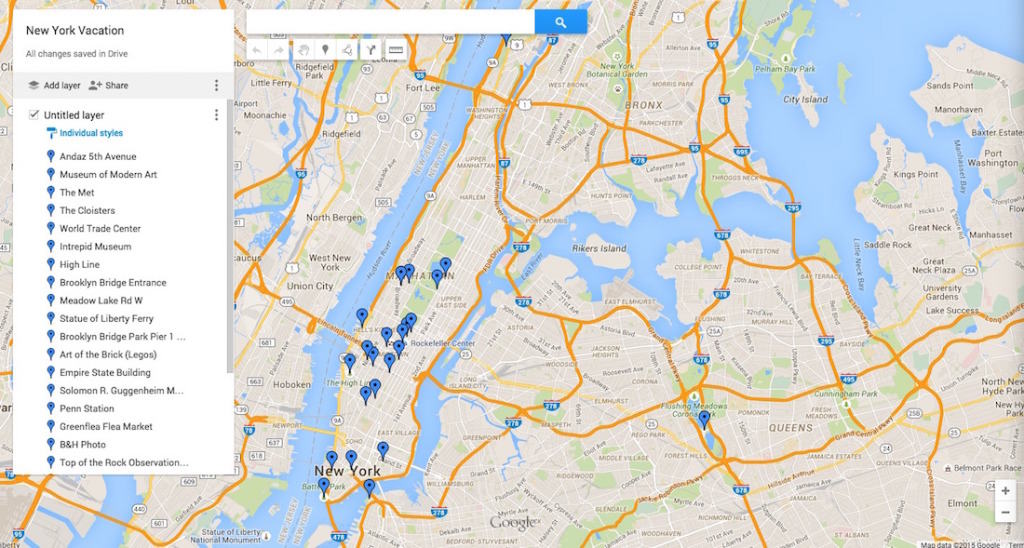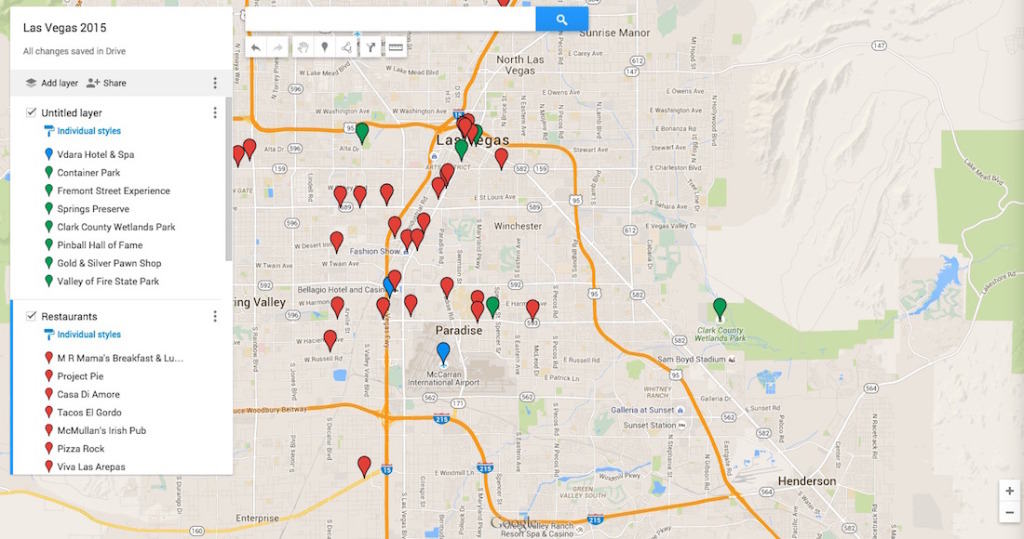This post may contain affiliate links. Please see my advertiser disclosure for more details.
A few weeks ago, I gave an overview of how I plan a vacation and I promised a subsequent series of the more nitty gritty details of my vacation planning process. Today’s post covers how I plan a day-to-day itinerary of a trip.

Now, there’s a few assumptions going into this post:
- This is an “active” vacation. And by that I mean it’s not like an all-inclusive resort where you’re staying on the beach all day every day. (Certainly not that there’s anything wrong with that! It’s just that you don’t quite need to plan out a detailed itinerary for that type of trip).
- You actually like to plan things in advance and don’t just like to trip upon things serendipitously. I figure, vacation time is precious. I don’t like sitting in the hotel in the morning trying to figure out what to do for the day! Or walking around just hoping to trip upon something amazing.
- With #2 out of the way, as always, you need to build in some flexibility. I don’t think there’s EVER been a trip I’ve been on that I’ve gotten to see everything I plan to see. There’s always something that changes. Like really enjoying one site and spending more time there than originally planned (like what happened when we were at the Intrepid Air and Space Museum in New York City and decided to spend more time there and go to the World Trade Center Memorial the next night, instead of rushing to finish at the Intrepid.) Or sometimes you’re just plain old tired and need to relax instead of hitting up yet another vacation attraction. I’m not one to “force” myself to see sites when I’m exhausted, because then I just don’t find it enjoyable.
By the way, in this post, I use the word “attractions” to mean anything to see at a particular destination. Museums, botanical gardens, National Parks, State Parks, scenic vistas, etc. You get the idea.
Figuring out what to do and see in a vacation destination
So, I mentioned a few of these things in the previous post, but let’s cover it (in a condensed format) again. After I pick a vacation destination(s), here’s how I figure out what to do in each destination:
- Consult TripAdvisor. Of course, I almost always check out the top sites. But remember to navigate several pages in to see some of the lesser-known sites.
- Consult Yelp. Since Yelp reviews tend to be written by locals and not tourists (although not always!) it’s a good way to find other sites and attractions that might be lesser known.
- Consult travel books. That’s right, I admit it. I still like travel books! Like Lonely Planet, Frommer’s Fodors, etc. I almost always buy at least one travel book for any big trip. They’re great for giving consolidated details about sites and attractions in your destination. Sometimes I get so overwhelmed by the abundance of online tips and reviews, that it’s nice to just read one consolidated and concise overview.
- Ask for recommendations from friends and family that may have already visited. I can’t think of a single trip where I haven’t posted online to Facebook or Twitter saying, “Planning a trip to XYZ. Any tips or recommendations?” Boom, automatic recommendations from people you trust. People always love talking about their previous travels.
For each site or attraction I find on each of the above-mentioned resources that sounds interesting like I might want to visit, I bookmark it, usually using Evernote (of course, any sort of bookmarking will work). I usually bookmark like the website for the actual attraction instead of the TripAdvisor or Yelp page, but sometimes for something that doesn’t have its own website, I’ll bookmark the TripAdvisor or Yelp review page instead.
So now I have an entire list (err, bookmarks) of potential sites to visit. Next up, it’s time to create maps to figure out the most efficient way of planning the daily itinerary.
Creating a custom Google Map to efficiently plan a daily itinerary
I’ll develop a map for EACH trip city. For instance, if we’re visiting four major cities, like our 2008 Road Trip to Atlanta, New Orleans, San Antonio, and Memphis, I’ll create a Google Map for each city. If it’s a trip to just one city, I’ll just have one map.
For this example, we’ll just go on the assumption that we’re visiting one city.
So, I create a custom Google Map with the city name. You can do this by going to maps.google.com and entering your cursor into the search box. A link with “My Maps” will appear. After you click on “My Maps,” there will be an option to “Make a Map.” If you have existing custom maps, they’ll also appear here.


I visit the website of each attraction I bookmarked for that city, and copy the address of the attraction. Then I copy it into Google Maps and add details to the description as necessary. Sometimes, when you search for an attraction on Google, it will automatically appear in Google Maps. Then you can just click on the map on the search results screen and save it to your custom map. However, sometimes I like to double check that the address is correct by verifying it on the attraction’s actual website. Sometimes things move or close, so I always like to verify! In the description or notes, for the map pin, I usually will also try to add the hours of operation so that I can keep that in mind when developing the daily itinerary.
After a while, I end up with a map that looks like this one did (for our 2013 New York City trip.

As you can see in the above map, there are some definite “clusters” of attractions, with a few outliers. So I know that I’ll probably plan each day around a particular location cluster. Sometimes the maps aren’t as clear cut, and things are really spread apart. No big deal. Then it usually doesn’t matter how we plan our visits to the different attractions.
If I know the hotel where we’re staying already, I’ll also add that to the map. Sometimes I know what hotel we’re staying at before this process, sometimes not. It depends if I’m jonesing to try a particular hotel (like the Park Hyatt Moscow or Andaz 5th Avenue). If I don’t have an immediate hotel preference, I might try to find a hotel around a cluster of some of the attractions we might want to visit.
So, let’s take the New York trip as an example. Using the custom Google Map, I identified what attractions to see on which day of our trip. Usually there’s not much preference in the order of which attractions we see on which days. Obviously if there’s something that’s really top on our list to see, then we’ll probably include that on our first day. Or, if one attraction in a particular cluster is closed on a certain day of the week, that might affect that day we visit those attractions.
Adding dining options to the itinerary
Next up is identifying restaurants. I didn’t always identify restaurants as part of the trip planning process. I was always like, “Oh, we’ll find something nearby.” And, who knows where we’ll be exactly when we get hungry! I would say like 80% of the time, that method was a catastrophe. We’d end up starving at some point, desperate to eat, frantically trying to check apps like Urbanspoon or Yelp on our phones to see what was good nearby, only to find that there was a two hour wait or that the restaurant prices were way more than we wanted to spend. So, although the whole concept of kind of finding some random hole-in-the-wall restaurant that ended up being fantastic, just by chance, never really happened. In fact, I can’t think of one restaurant that we’ve ever found randomly that was terribly memorable. So now, we try to build in dining options into our itinerary. However, keep in mind, flexibility is key! If you do find some random hole-in-the-wall restaurant, by all means, go for it!
I follow much of the same process. I use Yelp, TripAdvisor, Urbanspoon, and recommendations from friends and family for restaurants. Although I love to cook, we’re not “foodies” by any stretch of the imagination, and the thought of spending more than $25 on an entree (really more than $15) makes me cringe. So, right off the bat we can usually limit our searches to less expensive restaurants.
Then, I create a different “layer” on my Google Map. I then enter in the addresses for each yummy-sounding restaurant option on the Google Map. I always identify WAY more restaurants than we could ever eat at during our trip, mostly because we want options in case if some of them don’t work out when we’re nearby. Like if we identified an Italian restaurant but are more in the mood for Mexican. We like to have options!
Here is the map I created for our Las Vegas trip back in February. The attractions have green pins, and the restaurants have red pins (the airport and our hotel have blue pins).

Voila. Pre-identified, well-rated, reasonably priced dining options all populated on our map. And wouldn’t you know it, many of them fall within our “clusters” of attractions. So when we’re out and about, we know exactly what’s nearby, well-rated, and reasonably priced when we start to get hungry!
Organizing the Final Itinerary
To do a final organization of all the information I’ve collected and to create a detailed daily itinerary for each day of the trip, I enter the information into TripIt. I’ll cover TripIt more in a future post, but just to summarize it here, it is a FANTASTIC app that organizes all your travel plans. You can just forward your plane, rental car, hotel, etc. reservation emails, and it automatically enters it into a wonderfully organized format.
But, using the daily itinerary options I developed based on my Google Map, I enter the desired attractions and restaurants for each day into TripIt. This is a manual process (although you can forward some dining reservations, like from OpenTable, to TripIt. Or even some tour reservations, although I’ve found that it varies wildly whether TripIt recognizes the format for random tour reservations.
Although entering this information makes it seem like we’re tying ourselves to a very rigid itinerary, it’s really not. Remember what I said at the beginning of this post. There is almost RARELY a travel day that our itinerary goes precisely as planned. So, when you see that I have it entered into TripIt that we’ll arrive at Springs Preserve at 11:30AM following our breakfast that started at 10:00AM, it’s really not that precise. Entering the times serves primarily one purpose: to ensure that we haven’t ridiculously over scheduled our day. So if we have five attractions on the daily itinerary and as I’m entering them in, at particular times I realize that we’d have just like 90 minutes to spend at each, that’s a helpful signal that we’ve scheduled too much for that day and it’s time to rearrange things or cut back.
I also enter in one restaurant each for breakfast, lunch, and dinner on our TripIt itinerary. Based on reviews and locations nearest the “cluster,” I’ll identify where to eat for each meal, and enter the restaurant details into TripIt for a particular time. Again, this is not as rigid as it seems. Sometimes we’ll eat all three meals, sometimes we won’t. And if we get hungry for something extra, or if the restaurant we planned to eat at is outrageously crowded, we can refer to our Google Map for other restaurants we previously identified.
Whew, that was a long post! It seriously took me longer to write and describe WHAT I do than it actually execute these plans! What do you do to plan daily itineraries for your trips?
